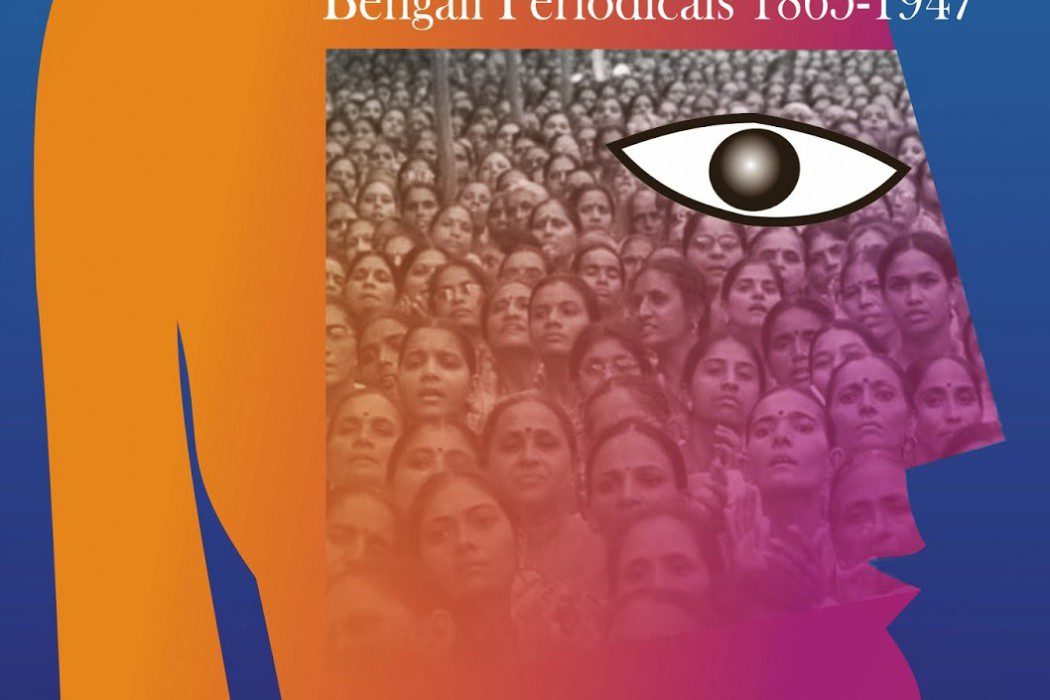Edited by Ipsita Chanda and Jayeeta Bagchi Stree, Rs 550
Book Review by Epsita Halder
In its series of readings in Gender Studies, the recent publication from the School of Women’s Studies, Jadavpur University, is called Shaping the Discourse: Women’s Writings in Bengali Periodicals: 1865-1947. Sixty-five articles by women across these eight decades were chosen and categorized by editors Ipshita chanda and Jayeeta Bagchi in an attempt to explore how the gender discourse of that period was shaped and socially actualized. While the collection neither presumes the absence of the slips between discourse and practice nor a relative autonomy, it does try to conceptualize gender at multiple levels —personal identity, principle of organization of social structures and basis of normative value(s). In their bid to chart out a ‘literary history’ of gender as a category, the editors have tried to show how this category is constructed through belief, reason and emotion, expressed through a particular genre and medium. Threading together possibilities of an ongoing multi-layered and multi-textured social conversation on women’s issues within a period that spans decades, the articles help readers trace the dynamics of change in positions and strategies on women’s education, child marriage, widow remarriage, seclusion, ‘reform’, self-help, patriotism and its practice and so on.
To express their concerns related to the woman’s position in private and public domains, not all women overtly defied traditionalist norms. Rather, in a bittersweet strategy of self-conscious chrysalis, women sought to reclaim themselves by fashioning the self and yet often articulating their positions and desires within traditional codes and vocabularies. But there are instances of direct defiance of the master narrative too; such as when the spiritualism attributed to Hindu marriage by Rammohan Roy was directly questioned (Hindu Bibaher Adhyatmikata, Banganari, 1921). In this period, so emblematic in showing the impulses of ‘reform’, the texts chosen are fraught with different conflicts between varieties of old and new, and the organization of gender and practice, ‘performed’ in daily social life, emerges out of this larger context of change and conflict.
The book arranges the essays thematically in four parts. In the first, ‘Breaking the Mould’, women try to contextualize and criticize the situation and position of women within a traditional patriarchy and in the process, critique the context itself. From polygamy (Kaulinya Pratha, Jogindra Mohini Basu, 1871) and dowry (Barpan, Kamini Roy, 1926) to the reality of private/andar confinement (Abarodhe Hinabastha, Nagendrabala Mustafi, 1894) and the spiritual Hindu marriage (Hindu Bibaher Adhyatmikata, Banganari, 1921), all are subjected to scrutiny by women from different time zones and social spaces. Sometimes, the language shows eagerness and urgency for freedom, like in her essay on Muslim women’s liberation, (Muslim Narir Mukti, 1929), Fazilatunnesa takes refuge in poetic metaphors. “The shackles that have been forced around the feet of Muslim women, the shackles that portrayed them as poor, lowly and distressed women before civilized society, must be broken into fragments, the feet may cut deep, but freedom from insult, and freedom from shame shall be their gracious victory”. The second section, ‘The Emerging New Woman’, has themes such as widow remarriage, child marriage, and education. Women question the destiny of abandoned women, separated after marriage. To whet academic curiosity, a brief history of magazines edited by women in Bengal has been included in this section.
Feminine familial voice and direct speech in an essay Letter from Grandma comes in the next section that talks about ‘Refiguring the Family and Relationship’. In this section, mobilizing the relationship between the mother-in-law and the daughter-in-law in the intimate space of the closed inner courtyard are lived experiences of the unfamiliar in the form of train travel and tea drinking.
The next section, ”Working’ for the Nation’ continues with women’s education as the recurrent theme with an engagement with the political state a new enterprise to actualize women’s issues and rights. A woman’s right to vote (Meyeder Voter Adhikar, Sri Swarnalata Basu, 1933), her position in India’s new form of governance (Bharater Nutan Shasantantre Narir Sthan, Sri Manorama Basu, 1936), her political steps (Bharatiya Nari Andolan, Renuka Mandal, 1940, and Nari Satyagraha Andolan, Saralabala Sarkar, 1947) comprise this section’s ideological thrust. Even so, a polyphony of positions emerge. While Sarala Sarkar’s essay is a positive response to Gandhian politics, Renuka Mandal is vehemently critical of Congress, Muslim League and Gandhian leaders, the last of whom she puts in the dock for being ‘against’ women’s emancipation. For Mandal, women’s emancipation is linked to economic independence, which she thinks is completely scuttled by Gandhi’s rejection of industrialization.
An engagement with gendered space takes centre stage. Across opinions on women’s education and vocational training (Narisiksha O Mahila Shilpashram, Srimati Saratkumari Chaudhurani, 1914), the duties of women citizens (Narir Nagarik Dayitva, Sri Sita Devi, 1931), birth control (Janma Shasan, Sudhamoyee Devi, 1933), political rights of women (Narir Rashtratantrik Adhikar, Begum Shamsun Nahar, 1935), women’s movement and educated women (Nari Andolan O Sikshita Meye, Arati Mukhopadhyay, 1938), women’s freedom and the ulema (Nari Mukti O Ulema Sampradaye, Anwara Rahman, 1946), law eradicating prostitution (Bar-Banita-Britti Daman Ain, Kamala Mukhopadhyay, 1933), we can see women of different periods connecting to the outer world in a more gender-neutral way. The description of the strike of Bombay signalmen (Bombay Signalarder Dharmaghat, Anonymous, 1899) and a discussion on responsibility (Kartabya Kon Pathe, Swarnaumari Devi, 1908) and communion (Jogajog, Sarala Devi Chaudhurani, 1911) are instances of perspectives of women as persons who relate to the world around them.
In a culture where every debate, from traditionalism to reform, involv the sastras, women enter that site of contest and consent in the creation of ‘modernity’. While texts in the beginning rely on the sastras and critique the male interpretation and implementation of sastric discourse, the latter ones question the very rationale of women’s derogatory value embedded in the discourse. Stressing urgent desire and need for women’s education, many writings relegate women to the familial, traditional roles. And yet, many Hindu women write on marriage with surreptitious cunning or seeming innocence, expressing interest in western ideas and demanding more emancipation on the grounds of humanity. The logic of rational liberalism is couched dutifully around the sastras, but the writers pull off this oxymoron. Muslim women, at the same time, refer to the Qur’an which does not debar women from education to validate their claim to books and learning. It is a negotiation between education, liberation and tradition where women aspire for knowledge not at the cost of their traditional place in society, instead reaffirming tradition as a strategic means to education.
The editors have consulted 24 periodicals through which they claim to have constructed the official and counter history of the time. Several strands, including the practice of literature, politics, education in the context of different communities and social positions, are brought together with overlapping connections of theme and identity. When women speak as/about women, different markers — woman, widow, confined woman, educated woman, Brahmo, Hindu, Bengali, Muslim — are entangled in a web of relations. While the specificity of one strand of identity, say widow or Muslim, takes over, it is the simultaneous production of ‘woman’ as an overarching term that espouses solidarity to ameliorate the condition of the ‘race of women’.
But what is most productive here is the attempt to create a discourse by bringing some vantage points of identification into dialogue with each other, breaking the linearity of theory with the spontaneity of lived lives. That an issue, say the spirituality of marriage, or the man-woman relationship or women’s education recurred under various themes, only shows the synchronic multiplicity of positions, diachrony of change and multivocity of the understanding of women’s questions. This is what the editors want to espouse in the formation of gender as a category. This book attempts to understand the internal logic of ideas regarding woman as a category at a time when colonised India was struggling with new, previously unexplored definitions, and acquaints readers with the impact of this category on the society that produced and cultivated these very women.














